- Home
- Blog
- UI Developer
- LinkedIn Interview Questions

- UI Developer Interview Questions
- UI and UX design trends to watch out for in 2024
- Full Stack Developer Interview Questions and Answers
- Software Design Interview Questions
- Low level Design Interview Questions
- MVC Interview Questions
- Nagarro Interview Questions
- Web Development Projects and Use Cases
- How to Install Atom
LinkedIn is the largest online networking platform for the workforce across the globe. This platform allows connecting with professionals from multiple domains, finding jobs, hunting for talents, sharing your professional achievements, and much more. Thus, LinkedIn serves as the platform for one’s professional growth in multiple ways.
Indeed, nailing a job on LinkedIn is a challenging task. You need to go through various technical rounds in addition to online test and managerial round. No doubt you must prepare well to crack the LinkedIn interviews.
On that note, MindMajix subject experts have designed the top 30 LinkedIn interview questions and answers to help candidates prepare for LinkedIn interviews.
Of course! The blog contains questions and answers on various topics such as data structures and algorithms, system design, database systems, graph theory, arrays, stacks, etc. We advise you to read the blog thoroughly to land your dream job.
Let’s Start!
- Interview Process
- Beginners Level
- Intermediate Level
- Advanced Level
- FAQs
- Leadership Principles
- Tips
- Conclusion
LinkedIn Interview Process
Typically, the LinkedIn interview process has at least five rounds: The online coding round, Technical Rounds 1 &2, System design round, and the managerial round. However, the number of rounds will be increased based on the roles and performance of candidates.
Let’s discuss the rounds individually.
-
Online Coding Round
You must take this round on the Hackerrank platform. This round includes a few coding problems and MCQs in DBMS, data structures, networking, and other topics. Note that the difficulty level of this round would be medium to hard.
-
Technical Round - 1
Candidates who clear the online coding round will attend this round. Mainly, it is a face-to-face interview. You will be asked questions about data structures and algorithms. And you will be asked about your experience, projects worked, achievements and challenges faced, and so on. The difficulty level of this Round will be medium to hard.
-
Technical Round - 2
This is the coding round where you need to write codes for problems of data structures and algorithms. The difficulty level of this round will be easy to hard.
-
System Design Round
This round will be generally conducted for experienced candidates. It will last for around one hour. You will be tested for system design skills in high-level architecture, databases, etc.
-
Managerial Round
This is the final round. You will be interviewed by the team manager with whom you may work. It is an interactive session where they will ask questions to determine whether you fit the role. Also, they will test your ability to work with teams, face challenges, meet deadlines, etc.
Lastly, you will receive your offer letter with a LinkedIn welcome kit if you have successfully cleared all these rounds.
Top 10 LinkedIn Frequently Asked Questions
- What are Arrays in Data Structures?
- Define Stack
- Name the different types of Array Data Structures.
- What are the real-time applications of Graph Theory?
- Mention the different types of edges used in DFS algorithms.
- When will you use BFS and DFS Algorithms?
- How does a merge sort work on a Linked List?
- What are the different SQL functions?
- How many rounds of interviews are typically conducted in a LinkedIn interview?
- What can I do if I fail a LinkedIn interview?
LinkedIn Interview Questions for Beginners
1. What are Arrays in Data Structures?
An array is a data structure that stores more than one data item of the same type. In other words, you can hold many values with a single name. With Arrays, we can quickly locate data items in memory locations. The memory locations are nothing but the elements of an array. Note that we use Indexes to find the elements of an array.
The below image will show the components of arrays in detail.
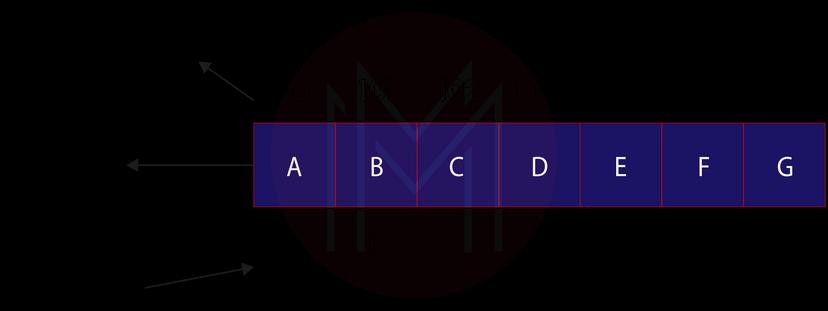
| If you want to enrich your career and become a professional in LinkedIn then enroll in "Full Stack Training" - This course will help you to achieve excellence in this domain. |
2. State the Operations that you can Perform with Arrays.
Following are the operations that we can perform with arrays.
- Insertion
- Deletion
- Traverse
- Update
- Search
3. Name the Different types of Array Data Structures.
There are three types of array data structures as follows:
- One-dimensional Array: In this type, elements are arranged one after another in an array.
- Two-dimensional Array: It is like a table in which all the table's cells act like elements of arrays. Data is stored in the cells or elements of this type.
- Three-dimensional Array: It is like a big-sized cuboid made up of many small-sized cuboids. Each cuboid acts like an element of an array.
4. Define Stack
A stack is nothing but a linear data structure in which the insertion, as well as removal of data takes place simultaneously. A pointer plays a pivotal role in the stack. This is because pointers usually indicate the memory location where the last inserted data is stored.
5. List the Basic Operations of Stack.
The following are the vital operations performed in a stack.
- Push ( )
- Top ( )
- Pop ( )
- Size ( )
- isEmpty ( )
6. What are Graphs in Data Structures, and Name a Few Types of Graphs.
A graph is nothing but a data structure made up of vertices in addition to edges. Edges connect two vertices through straight lines or arcs. Here, vertices are also known as nodes.
Following are the many types of graphs used in data structures.
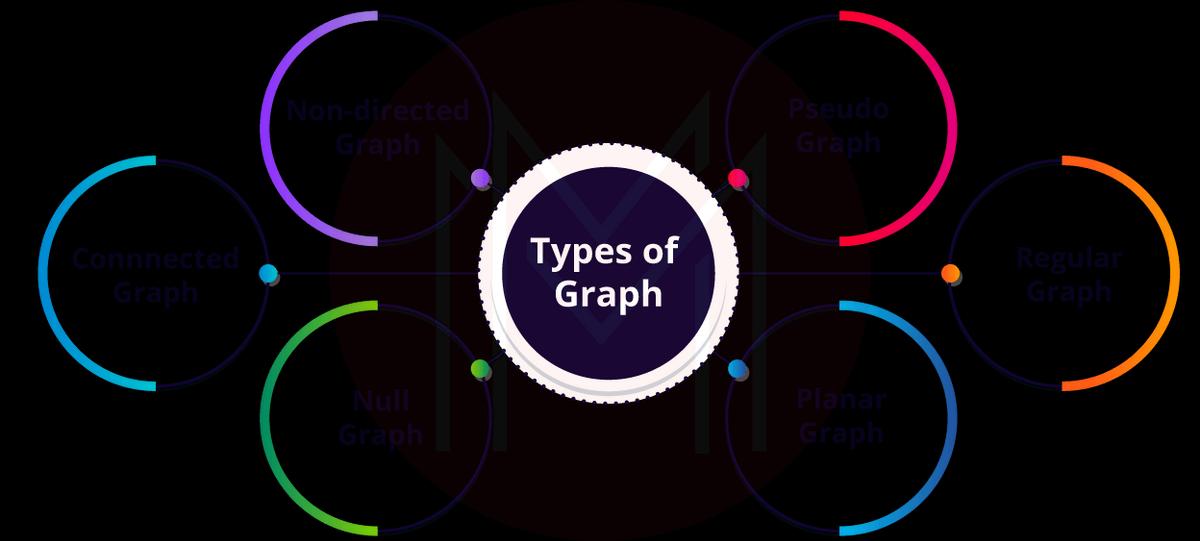
7. Brief about Graph Reversal in Data Structures?
Graph reversal is essential to arrange nodes in a graph. It is the method that we use to search nodes in a graph. This method explores nodes as well as edges without forming a loop. Know that Depth First Search (DFS) and Breadth First Search (BFS) are the two graph reversal methods used in data structures.
8. Why do we use Pseudo Code?
In Pseudocode, you can find a detailed description of algorithms. In a way, Pseudo code acts as the bridge between the algorithm and the program. It simply directs developers to develop codes for the given problem. It is essential to note that pseudo code is written for human understanding - not machine reading. So no programming language is needed to write pseudo code.
9. What do you Understand by Quick Sort Algorithm?
It is one of the efficient sorting algorithms that we use to divide a large array into two small sub-arrays. This algorithm uses the divide and conquer principle to divide arrays and solve problems. Mainly, this algorithm uses the pivot value to split the array into two subarrays. The left sub-array will have values lesser and equal to the pivot value. The right sub-array will have values greater than the pivot value.
10. Mention a few applications of Data Structures.
Below are the key areas where we can apply data structures widely.
- Decision making
- Numerical analysis
- Image processing
- Blockchain
- Database design
LinkedIn Interview Questions for Intermediate
11. Brief about Queue in Data Structure?
A queue is nothing but a data structure that helps to store data items systematically. A new data item is usually held in the rear end. At the same time, the old data item is removed from the queue. It is essential to note that If we want to keep data items for a long time, we must use the queue data structure. The queue data structure is used in BFS algorithms, Operating Systems, Call management, and more.
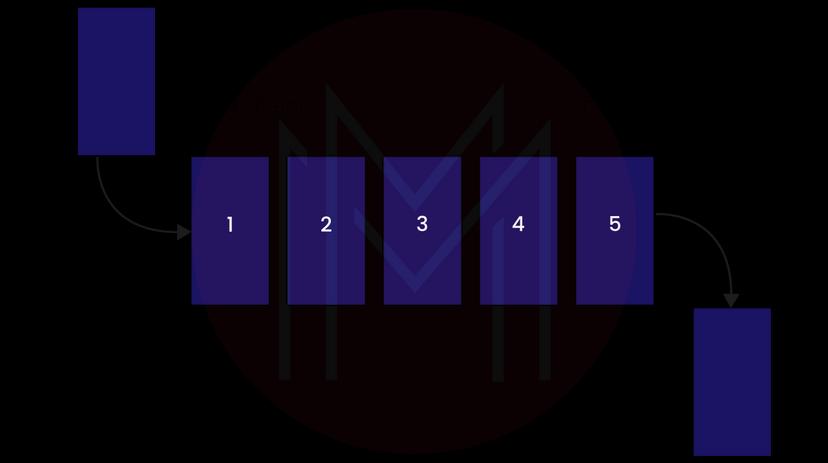
12. List the Advantages and Disadvantages of Arrays.
Advantages
- We can store and access data with the help of arrays effectively
- We can search specific elements
- We can sort data in both ascending and descending order
- We can use arrays to represent graphs
- We can use arrays to implement stacks as well as queues
Disadvantages
- Arrays have only fixed-size elements
- Insertion and deletion of data in arrays is time-consuming and complex
- It isn't easy to store large-sized data in arrays
- All the data in an array must be of the same type, which in turn demands large memory spaces.
13. How do Insertion and Deletion Work in Stack?
Insertion is the process of pushing data into a stack. On the other hand, deletion is removing data from a stack. Both insertion and deletion take place at a single end. This end is known as ‘Top’. It means that data is inserted onto the top and removed from the top.
Mainly, data is inserted and deleted in a stack based on the LIFO principle. The ‘push’ operation is used to insert data onto the top, whereas the ‘Pop’ operation is used to remove data from the top.
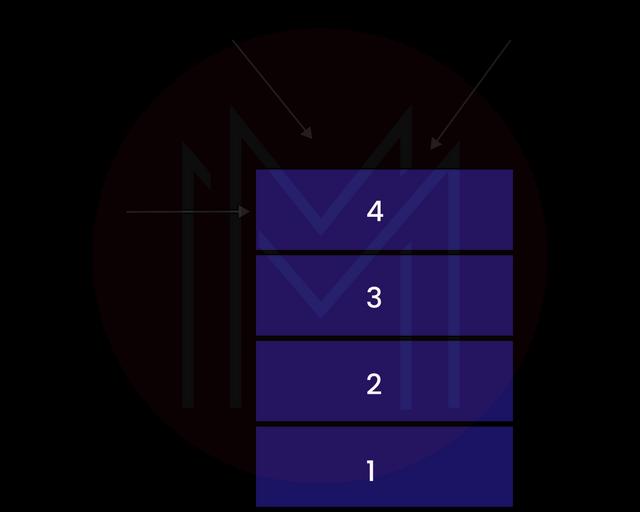
14. What are the Real-Time Applications of Graph Theory?
Following are the real-time applications of graph theory.
- We can effectively schedule flight crew
- We can conduct molecular and atomic research
- We can find the shortest paths on Maps
- We can quickly solve Sudoku puzzles
- We can sequence DNAs
- We can use graph theory in search engine algorithms like Bing, Google, etc.
15. State a few Applications of Depth-First Search (DFS) Algorithms.
Below are a few applications of DFS.
- Memory requirement is linear and demands only less memory.
- We can find the shortest paths
- We can perform topological sorting
- We can find a path between two vertices
- We can find the components that are strongly connected.
16. Mention the Different types of Edges Used in DFS Algorithms.
Here are the different edges used in DFS.
- Tree Edge
- Back Edge
- Forward Edge
- Cross Edge
17. How Does Quick Start Algorithm Work?
This algorithm divides large arrays into two small sub-arrays. The pivot value is used to divide the large array into two. Of the two sub-arrays, one array will have values smaller and equal to the pivot value. Another array will have values higher than the pivot value.
18. How Does the Merge Sort Algorithm Work?
This algorithm consists of three stages: divide, conquer, and combine. First, it separates an array into two halves. Then, it continuously divides the arrays' elements until they can't be divided anymore. After that, the elements are combined together to form a sorted array.
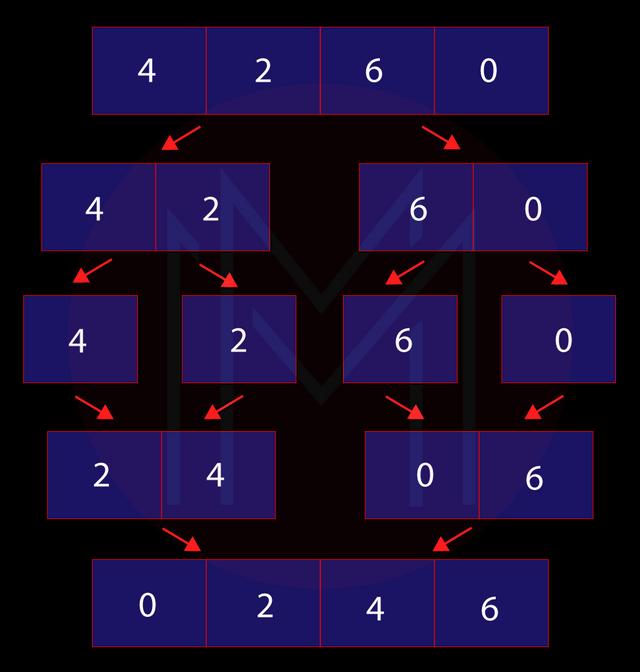
19. What do you understand about SAN, and why do we use it?
SAN stands for Storage Area Network. It is a high-speed network of storage devices that computers and servers can access at any time. In a way, SAN acts as the shared pool of storage space. Also, we can use SAN as a single collective resource with high-level protection. We can improve the storage capacity of SAN along with its resilience.
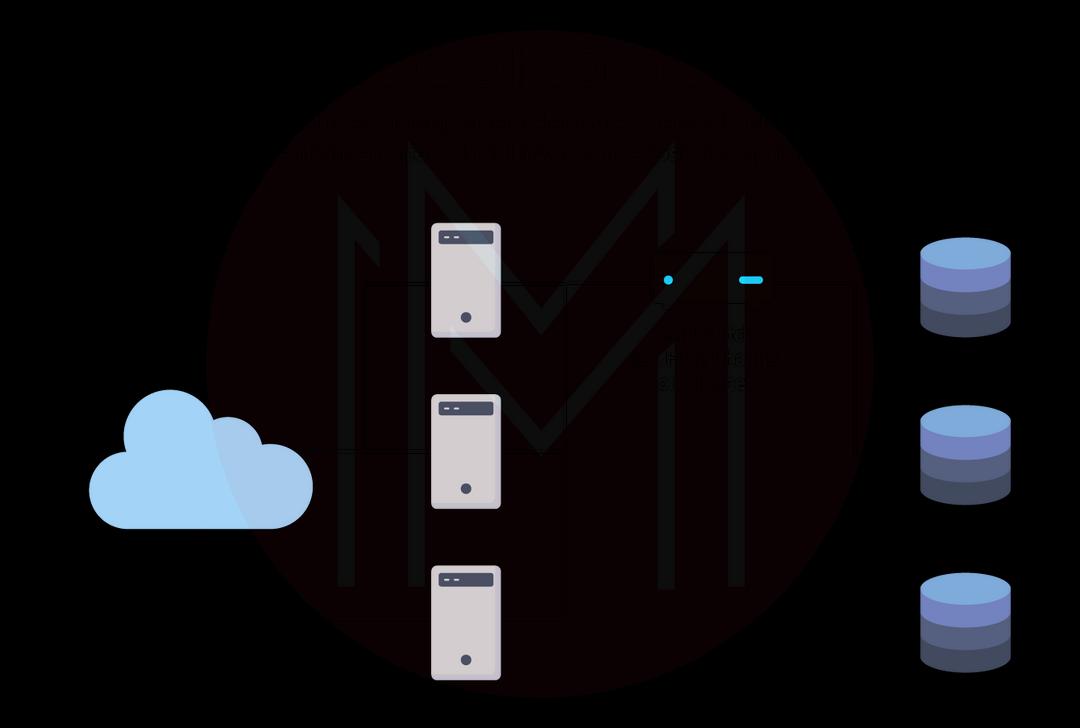
20. Define Denormalisation and when to apply it.
Know that denormalization is not opposite to normalization but is an optimization technique. Denormalization is the process of adding redundant data to the data already stored in a database. As a result, we can improve the efficiency of the database remarkably.
LinkedIn Interview Questions for Advanced Learners
21. Write an Algorithm to Identify the three Largest Elements from an Array.
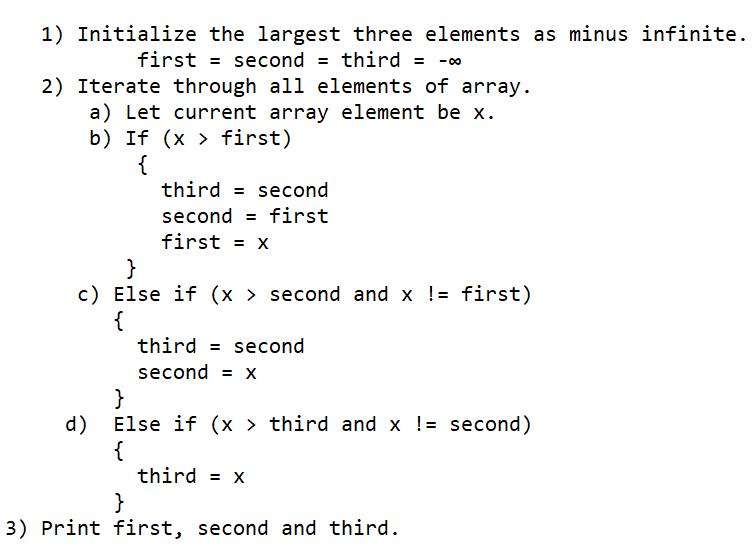
22. How is a Tree Different from a Graph?
| Tree | Graph |
| Every tree has a root node | It is not necessary to set a root node in graphs |
| Trees don't form cycles | They form cycles |
| Every node in a tree can have any number of edges | If there are n number of nodes, then there must be n-1 edges |
| Edges are directed in trees | Edges can be both directed and undirected |
| We use inorder, preorder as well as postorder for tree traversal. | We use BFS and DFS for graph traversal |
23. Write an Algorithm to find the Maximum Depth of a Binary Search Tree (BST).
We can find the maximum depth of a binary tree by counting the number of nodes from the root node to the farthest node. In other words, it is the height of the binary search tree.
The algorithm to find the maximum depth of a BST can be written as follows:
- Calculate the height of the binary tree in terms of nodes on the left side of the root node, recursively
- In the next step, calculate the height of the binary tree in terms of nodes on the right side of the root node, recursively
- Finally, choose the height value that is larger from the above two calculations. Then increment the chosen value by the value 1. This addition is needed to include the root node.
24. Write an algorithm to invert a Binary Tree.
If we want to invert a binary tree, we need to swap the right and left nodes of a binary tree. The algorithm for this problem can be written as follows:

25. How Would you Perform an in-order Reversal for a Given tree?
If we want to perform in-order reversal for a given tree, we must follow the ‘left root policy’. The following sequences are performed one by one based on the left root policy.
The first left tree is visited before traversing the root node. Then the right sub-tree is traversed. Finally, the root node is traversed between the left and right sub-trees. This is why this procedure is named in-order reversal.
26. How to perform Level-Order Binary tree Traversal Using Recursion.
We use the following steps to implement the level-order binary tree traversal.
- Execute the ‘for loop’ for counter ‘i’
- To transverse a tree, use the DFS algorithm
- Then, keep the height for the current node
- If the node is NULL, return
- If the level is 1, then print
- Recursively call to tree -> left, and level -1
- Recursively call to tree -> right, and level -1
- Else if the level is more than 1, then do the following
27. When will you Use BFS and DFS Algorithms?
We use BFS when:
- the solution is near the starting point, and the graph has greater depths.
- we need to find the shortest path in a graph
- If there are multiple starting points, then we will use BFS to traverse through the nodes
We use DFS when:
- the solution is farthest from the starting point, and the graph has a greater width
- we need to find paths between nodes
28. How Does a Merge Sort Work on a Linked List?
Merge sort works in a linked list as it works in arrays. It splits the linked list recursively into two lists. The splitting continues until we get the sublists of size one. After that, we can merge the sublists to create the sorted list. The main thing about merge sort is that it supports sequential access - not random access.
Related Article: Linked List Interview Questions
29. Can Dynamic Memory Allocation be in Line with Data Management?
Yes. Dynamic memory allocation can be in line with managing data. Dynamic memory allocation stores simple data structures at run time. It can form composite structures that can expand and shrink. Besides, we can easily manage the data blocks of arbitrary size with dynamic memory allocation.
30. What are the Different SQL Functions?
Here are the different SQL functions.
- Aggregate functions – They return a single value after processing multiple values.
- Rowset function – They return table reference values
- Analytic function – They return multiple rows for each group
- Ranking function – They rank values in a row
- Scalar function – They return a single value after processing a single value.
Most Commonly Asked Linkedin FAQs
31. What type of Questions are typically Asked in a LinkedIn interview?
The questions from data structures and algorithms are mainly asked in LinkedIn interviews. You will also be asked questions about computer fundamentals, operating systems, design, and database systems.
Related Article: Data structures Interview Questions
32. How many rounds of interviews are typically conducted in a LinkedIn interview?
Linkedin conducts five rounds of interviews to recruit technical people. They are shown in the following order.
- Online Coding Round
- Technical Interviews – Rounds 1&2
- System Design Round
- Managerial Round
33. How should I prepare myself to ace a LinkedIn interview?
It would help if you were well-versed in system design, database systems, and other key computer topics. It would help if you were thorough in data structures and algorithms. You must have sound coding knowledge. Above all, you should have good analytical skills and problem-solving skills.
34. Is a LinkedIn interview tough to crack?
It depends on the preparation level. If you have prepared well for all five rounds, cracking the LinkedIn interview is not a big deal. On the contrary, if your preparation is not up to the mark, yes! The interview is going to be tough, undoubtedly.
35. What can I do if I fail a LinkedIn interview?
You can retry the interview for the next time. But you must prepare well and improve your coding skills to try your luck in the next attempt.
LinkedIn Leadership Principles
In this section, we will look at a few LinkedIn leadership principles that make LinkedIn a great workplace.
Here we go:
- Employee-first
LinkedIn is always keen on the welfare of its employees. All the decisions are taken with the idea of ‘employee-first’. So employees are unaffected by any critical decision the company takes, which makes them enthusiastic, productive, and energetic.
- Conducive Work Environment
LinkedIn encourages employees to interact and collaborate with integrity, mutual respect, and compassion. Constructive feedback is sought from employees so that everyone can learn from mistakes and grow. Leaders in LinkedIn always embrace diversity and inclusion. So candidates who have the necessary skills get the opportunity to work in LinkedIn.
- Big Dreams
The prime goal of LinkedIn is to offer economic opportunity to the global workforce. The leaders of LinkedIn always dream big and drive employees to work towards a common goal.
Tips to crack LinkedIn Interview
- Prepare a solid self-introduction.
First and foremost, you need to prepare your self-introduction perfectly. These are the very first words you speak with your interviewers. So the first impression is built based on your self-introduction. Within a few minutes, interviewers will begin to infer your level of communication, background, body language, and so on. It would be better to talk about the reasons why you chose your graduation or previous company rather than just giving raw data about your educational background. The self-introduction must be more brief and impressive.
- Repeat your Strengths.
It is very important to discuss your strengths repeatedly during the interview. You must brief interviewers on how your strengths will support the role you are being interviewed for. You can explain how you applied your strengths in previous companies or while studying and achieved success. Remember! Show the proofs and facts to ascertain your strengths to the interviewers.
- Be clear with your Goals.
You must be very clear with your short-term and long-term goals. Mainly, the goals should be realizable. Talking about your goals will indicate that you are a visionary and result-oriented professional. Importantly, you must be passionate about your goals and aggressive to achieve them. It would help better if you spoke more about your career goals than your personal ones.
- Show your interest in LinkedIn.
Before attending the interview on LinkedIn, you must have done good research about LinkedIn. You must be clear: Why are you interested in this job role? Why have you chosen LinkedIn to work for? How will it support your career growth? It would help best to have clear-cut answers to all these questions. In short, you must show your interest in LinkedIn in all possible ways.
Conclusion
Let’s wrap off! Now, you must have gone through the LinkedIn interview process in detail. There are five rounds, including an online coding test, two technical interviews, system design, and managerial rounds. We hope the top 30 LinkedIn interview questions and answers will be helpful to you.
Further, if you want to level up your data structure and algorithm expertise, you can sign up for a course in MindMajix. So you can get certification and crack LinkedIn interviews in the best way possible. Ultimately, you can land your dream job on LinkedIn.
 On-Job Support Service
On-Job Support Service
Online Work Support for your on-job roles.

Our work-support plans provide precise options as per your project tasks. Whether you are a newbie or an experienced professional seeking assistance in completing project tasks, we are here with the following plans to meet your custom needs:
- Pay Per Hour
- Pay Per Week
- Monthly
| Name | Dates | |
|---|---|---|
| Full Stack Training | Dec 23 to Jan 07 | View Details |
| Full Stack Training | Dec 27 to Jan 11 | View Details |
| Full Stack Training | Dec 30 to Jan 14 | View Details |
| Full Stack Training | Jan 03 to Jan 18 | View Details |

Madhuri is a Senior Content Creator at MindMajix. She has written about a range of different topics on various technologies, which include, Splunk, Tensorflow, Selenium, and CEH. She spends most of her time researching on technology, and startups. Connect with her via LinkedIn and Twitter .















